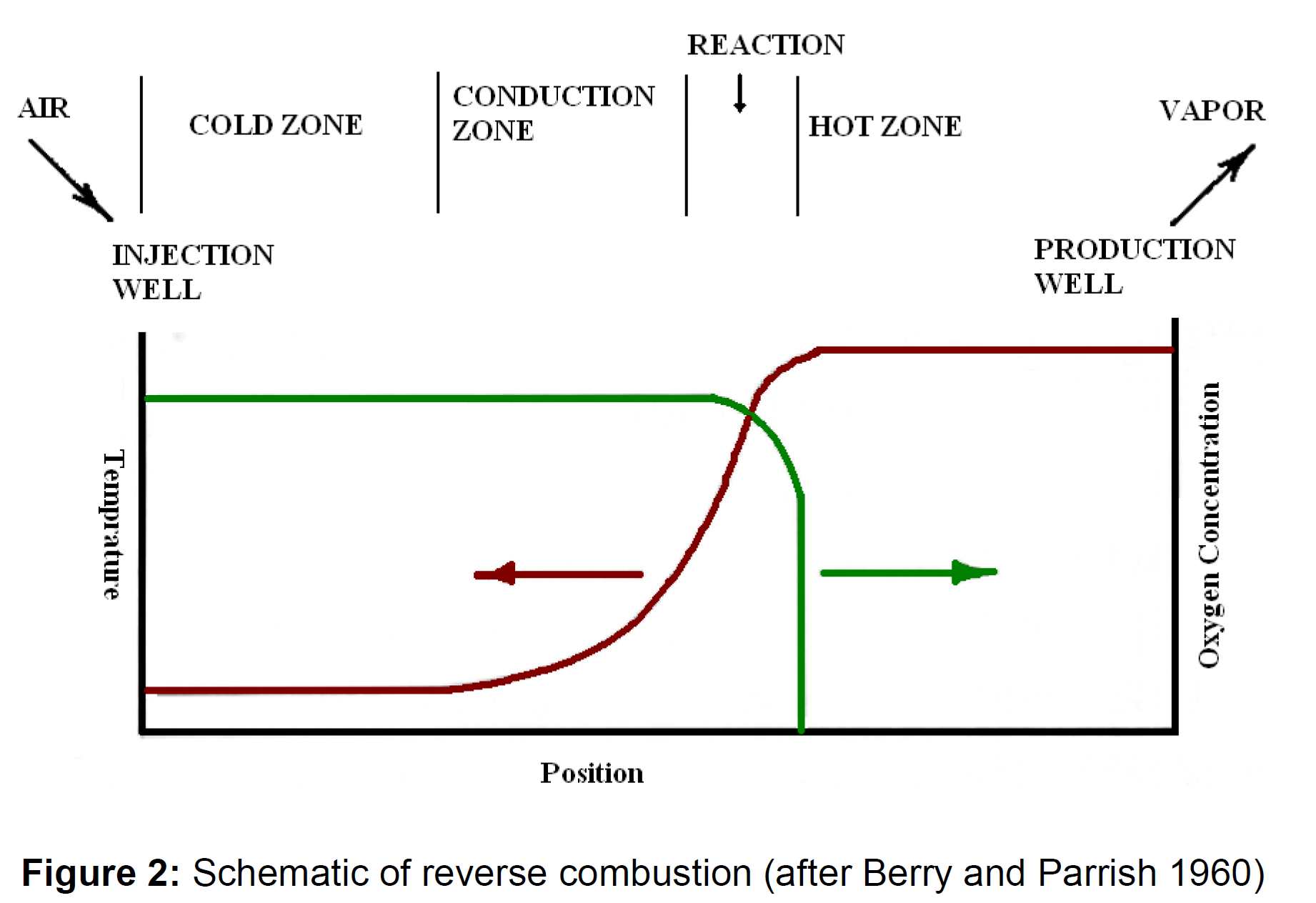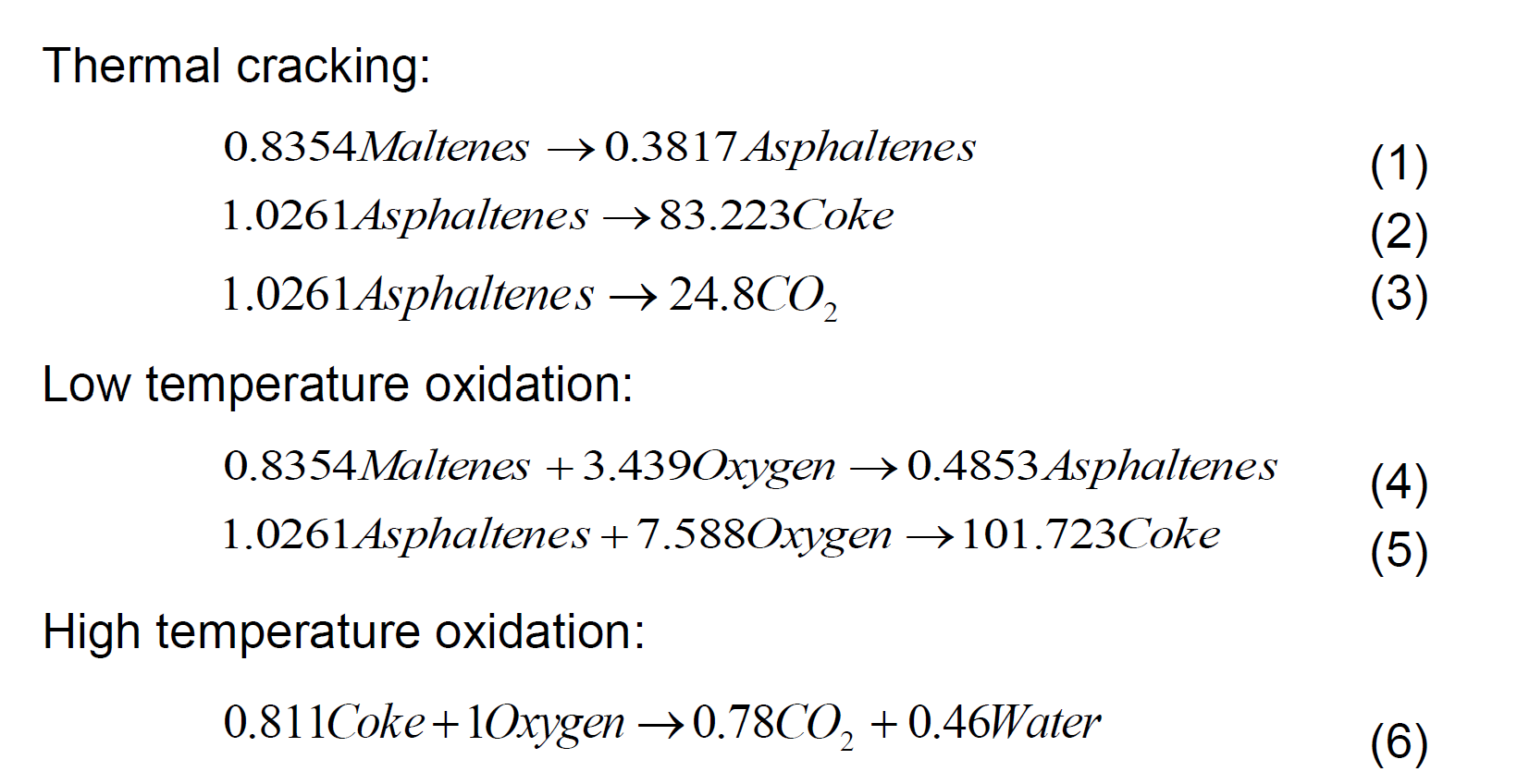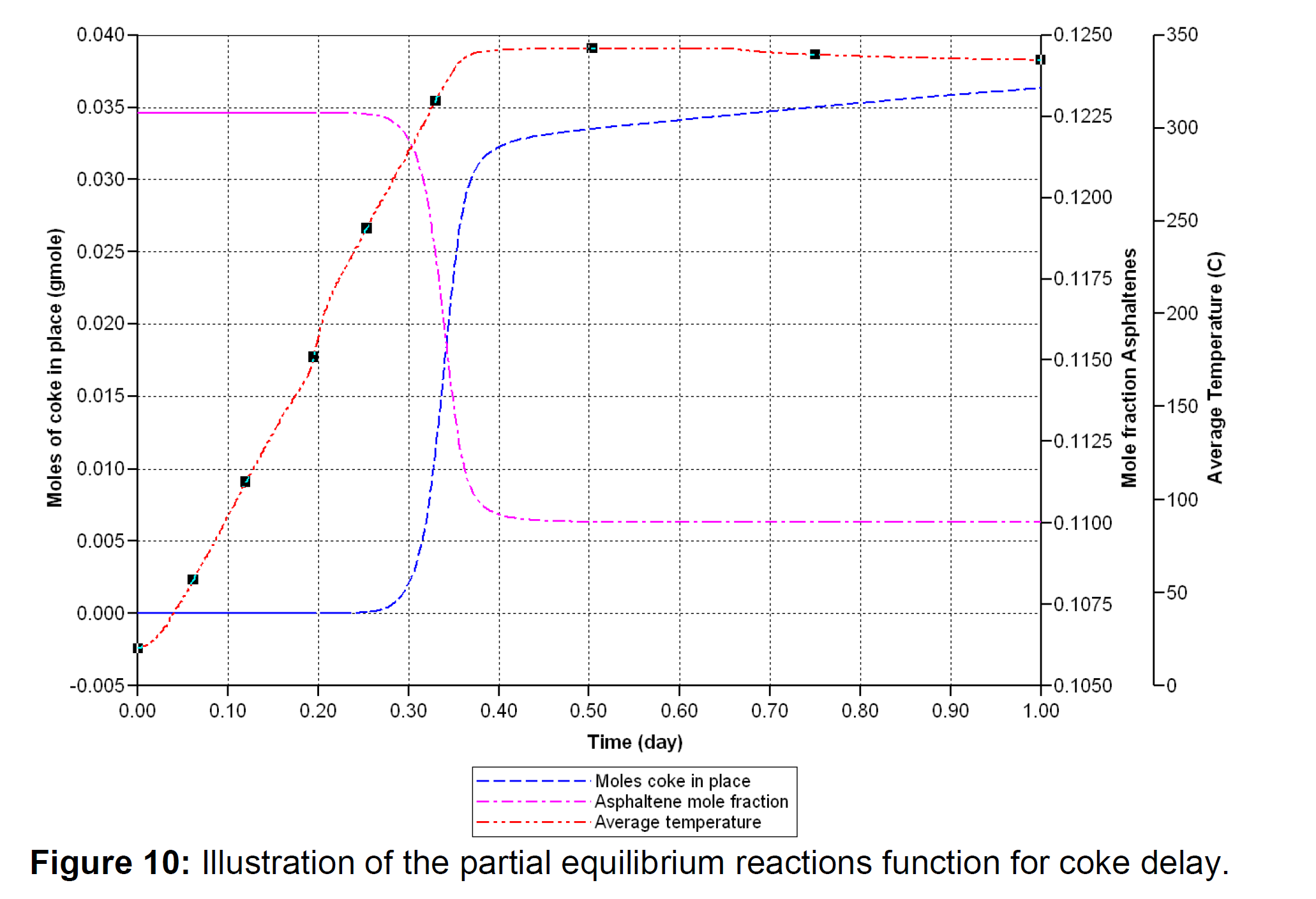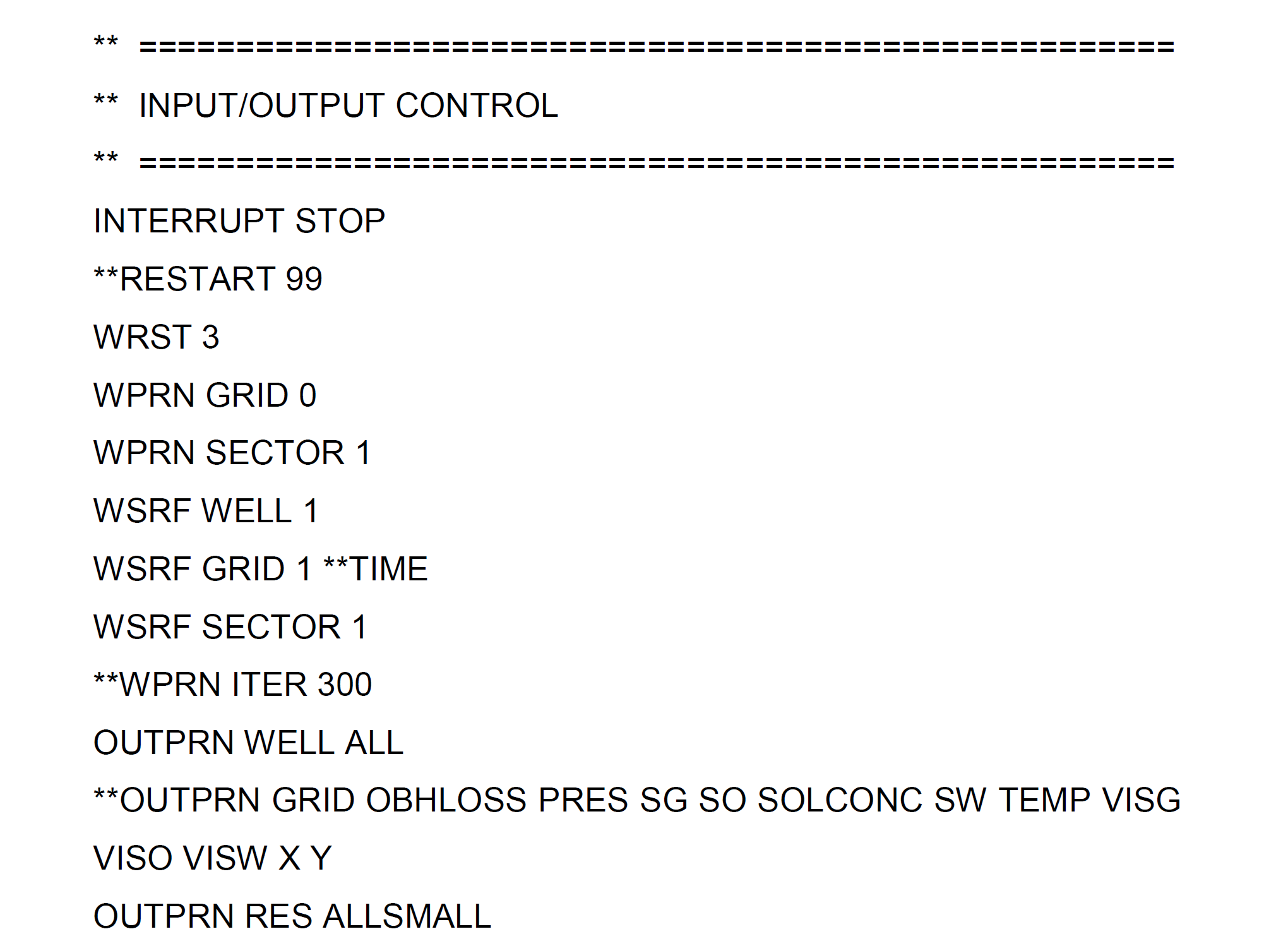Numerical Modeling and History Matching of Super-Wet Combustion Tube Test
定义并实施了大量实验室实验,以揭示在特定设计条件下从稠油油藏钻取的岩心样品的原位燃烧行为。加速速率量热法(ARC)试验、升温氧化法(RTO)试验和燃烧管法(CT)试验是主要的筛选实验,可以为原位燃烧过程提供相关数据。
根据注入流体的不同,有不同类型的燃烧过程,注入空气或氧气的正常干燃烧,当水与空气注入时称为湿燃烧,而超湿燃烧过程定义为相对较高的水空气比。湿式和超湿式燃烧是本研究的主要对象。
在本工作中,对湿/超湿CT实验进行了建模和历史匹配研究,以更好地了解实验过程中发生的原位燃烧过程。为了识别实验细节并分析动力学反应,对文献进行了仔细的回顾。主要的动力学反应有热裂解过程、低温氧化和高温氧化。确定并评价了影响动力学反应的参数。为了了解实验中发生的动力学反应,我们进行了建模和历史匹配工作。模拟模型是基于CT实验的Belgrave模型创建的,数据文件是用STARS运行的。给出并分析了结果。仿真结果旨在与所有实验结果相匹配。对温度剖面进行了历史匹配,以获得模拟和实验之间的最佳匹配。不同的参数被认为是变量:频率因子、活化能和焦炭沉淀参数、相对渗透率、饱和度和气体注入速率。
结果表明,频率因子、活化能和焦炭沉淀对动力学反应有显著影响,主要影响Belgrave模型中Maltene转化为沥青质的反应。经过人工历史拟合,利用BASRA HM工具实现的自动历史拟合算法得到了成功的测试。
SUMMARY
A number of laboratory experiments are defined and implemented to reveal the in situ combustion behavior on core samples drilled from heavy oil reservoirs under specifically designed conditions. The accelerating rate calorimetry (ARC) test, the ramped temperature oxidation (RTO) test and the combustion tube (CT) test are the main screening experiments which can provide relevant data for the in situ combustion process.
There are different types of combustion process depending on the injection fluid, normal dry combustion with injection of air or oxygen, the wet combustion is termed when water is injected with air and the super wet combustion process is defined with relatively high water-air ratio. Wet and super wet combustion is a primarily object of this study.
In the present work, a modeling and history matching study has been performed on the wet/super wet CT experiment in order to get better insights into the in situ combustion process occurred during the experiment. The literature has been carefully reviewed to recognize the experimental details and analyze the kinetic reactions. The main kinetic reactions are thermal cracking process, low temperature oxidation and high temperature oxidation. The parameters influencing the kinetic reaction are identified and evaluated. The modeling and history matching work has been done to understand the kinetic reactions happened in the experiments. The simulation model is created based on the Belgrave’s model for the CT experiment and the data file is run with the STARS. The results are presented and analyzed. The simulation results are aimed to match all experimental results. History matching has been performed to get the best match between the simulation and experiment on the temperature profiles. Different parameters have been considered as variables: frequency factor, activation energy and coke precipitation parameter, relative permeability, saturations and gas injection rates.
The results show that the frequency factor, activation energy and coke precipitation have significant influence on the kinetic reactions, mostly on the reaction where Maltene is converted into Asphaltene in the Belgrave’s model. After manual history matching, the automated history matching algorithm by utilizing BASRA HM tool has been successfully tested.






